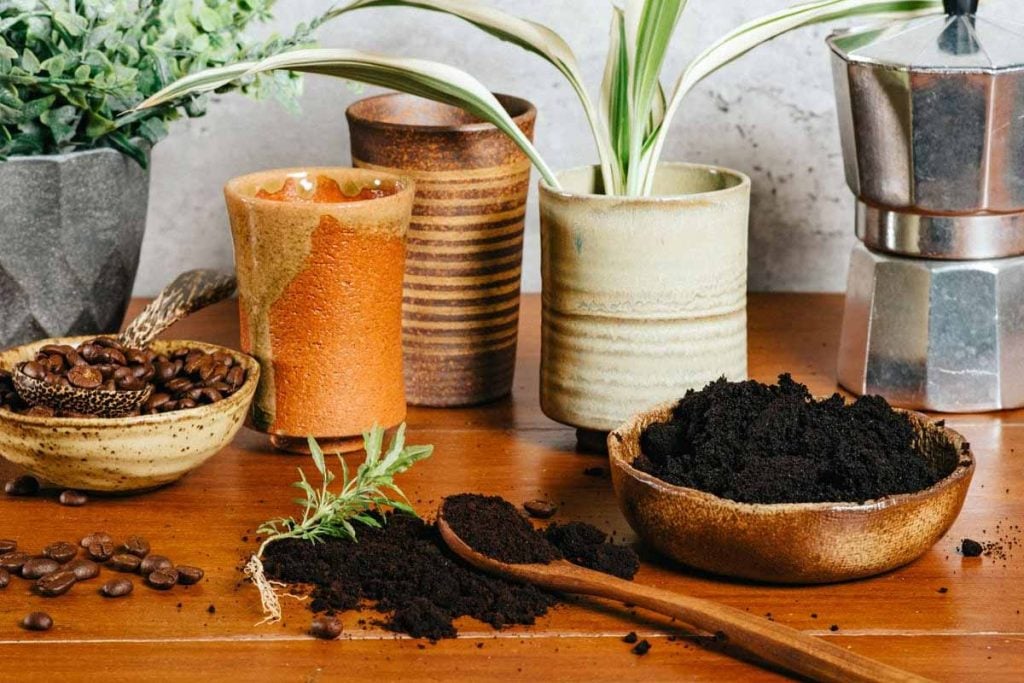Your morning brew hides a small, green secret that saves money and lifts plant health. Used coffee grounds turn kitchen waste into living soil food, while you keep clutter out of the bin. Handled with care, this eco habit boosts blooms, leaves, and roots across beds and pots. Because nutrients release slowly, growth stays steady, and the soil breathes better. Here’s how to use them well, which plants love them, and what to avoid.
Why coffee grounds enrich soil naturally
Plants crave steady nutrition, and coffee grounds deliver it without shocks.
- Nitrogen feeds leafy growth,
- phosphorus builds roots and flowers,
- potassium supports natural immunity.
Trace amounts of magnesium and copper aid chlorophyll and enzyme activity. Because nutrients release slowly, you avoid the scorch that fast synthetic feeds can cause.
Structure matters as much as chemistry. As grounds break down, earthworms tunnel and loosen the soil, improving aeration and drainage. That movement lifts water infiltration and reduces compaction around tender roots. The added organic matter feeds diverse microbes. Which turn residue into plant-available nutrients and create a living soil web.
pH balance also shifts in helpful ways. Grounds start mildly acidic, so acid lovers respond well. In alkaline beds, that effect softens over time and settles near neutral. This gentle buffer avoids sharp swings that stress roots. Active soil life then keeps conditions steady across seasons and watering cycles.
Plants that respond best to this kitchen amendment
Acid-loving shrubs answer quickly to coffee grounds. Hydrangeas show richer blue tones when soil leans acidic, especially where beds run alkaline. Rhododendrons and camellias reward light, regular doses with glossy leaves and longer bloom windows. Use modest amounts and avoid smothering roots, since airflow around feeder roots still matters.
Roses thrive when nutrition arrives in steady waves. Nitrogen supports lush canes and buds, while potassium bolsters natural defenses against stress. Gardeners often fold small amounts of grounds into the drip line during the active season. That simple habit builds vigor and encourages repeat flushes without harsh, fast-acting salts.
Vegetable beds respond well when soil breathes. Tomatoes produce better and hold health when grounds join the planting mix. Add bone meal to round out calcium and phosphorus. Leafy greens like lettuce, spinach, and chicory grow fuller. Indoors, monstera, ficus, and orchids accept tiny, occasional doses blended into potting mix.
Simple pest barriers and companion tips
For gentle pest control, coffee grounds help more than you expect. Slugs dislike the gritty texture and residual caffeine, so they avoid crossing a thin band. Circle seedling trays or basil with a light ring, and refresh after rain. This simple barrier protects tender stems without pellets or harsh sprays.
Ants often detour when they meet a dusting of grounds, which reduces tunneling near roots. Some growers also see fewer aphids, yet results vary by climate and species. Treat this as one tool among many, paired with:
- airflow,
- steady watering,
- prompt removal of infested shoots.
Companion layouts in permaculture gain from small, targeted rings near partner plants. Use grounds to bolster health while you balance nutrients with compost and mulch. Cats dislike the texture and scent, so a light sprinkle can protect new beds from digging. Test in a corner first, then scale what works.
Smart ways to apply coffee grounds without risk
Start with preparation. Spread used grounds thinly on paper or mesh, then dry for 24–48 hours. Dry material avoids mold and odor indoors. Mix into the top 2–3 inches of soil, or add to compost. Avoid broadcast layers, since crusting can block water and air at the surface.
Moderation keeps roots happy when using coffee grounds. Stick to 1–2 tablespoons per plant, applied at most four times each year. Never let surface layers exceed a half inch. In sensitive beds, check pH often, and balance the mix with compost, leaf mold, or other organic amendments.
Work small amounts during active growth, then water well. In compost, blend grounds with dry browns to maintain airflow, and turn the heap often. That mix supports heat, reduces excess acidity, and speeds decay. Within weeks, you gain a balanced amendment that feeds beds without sharp spikes or dips.
When to hold back and how composting helps
Some plants prefer restraint. Mediterranean herbs such as lavender, rosemary, and thyme like neutral or alkaline soil, so use none or only tiny amounts. Acid lovers handle more, yet always test on a small patch first. Watch foliage; pale or curled tips mean pause and adjust the plan.
Young seedlings are delicate. High nitrogen near tiny roots can scorch tissues or delay germination, so wait until plants establish. Use a compost blend for trays, not raw grounds. When you up-pot, blend just a pinch into the mix and track growth for a week before repeating.
Fresh grounds carry more caffeine and sharper acidity than aged material. Let them weather in a bin or blend with carbon-rich browns to mellow the effect. Composting coffee grounds with leaves, straw, and peelings yields a stable, crumbly amendment that nourishes sensitive beds without surprises. Patience pays.
A simple habit that turns leftovers into lasting growth
Small changes make big gardens. Dry, mix, and measure, and coffee grounds become a low-cost path to stronger soil. Because release is slow, plants gain steady support while waste stays out of the bin. Pick friendly species, note the cautions, and use compost to balance the mix. With that rhythm, beds stay airy, roots stay active, and blooms keep coming. Start with a handful, observe, and fine-tune as each bed responds.
